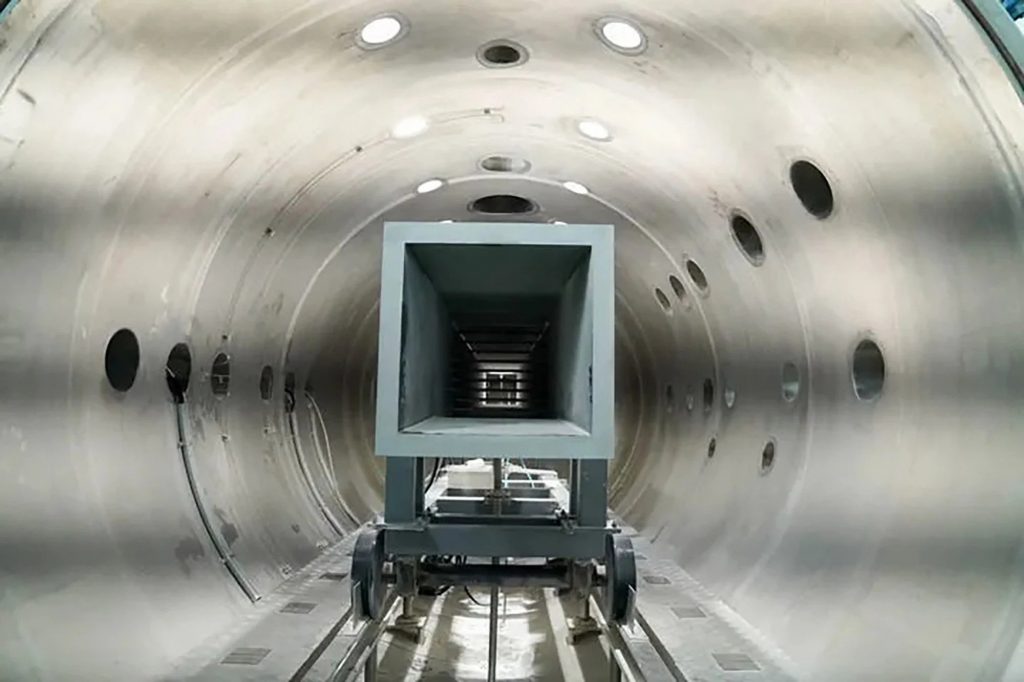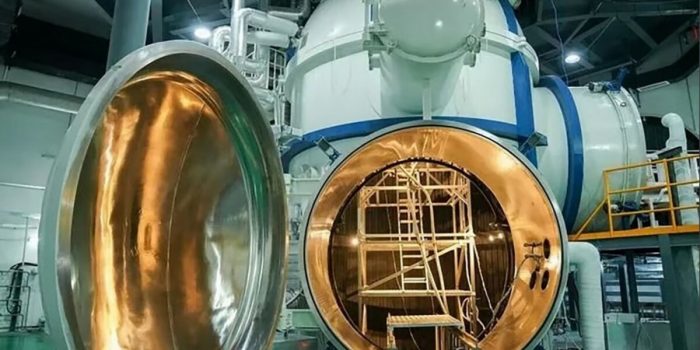China has recently commenced trial operations of its first space station simulators, located in the city of Harbin. These simulators have been specifically designed to replicate the unique conditions encountered beyond Earth’s atmosphere.
According to China Space News, an affiliate of China Aerospace Science and Technology Corporation, the simulators aim to recreate microgravity, weak magnetic fields, electromagnetic radiation, plasma, and space dust, among other factors.
The joint project, also referred to as the “ground space station,” was developed in collaboration between China Aerospace Science and Technology Corporation and Harbin Institute of Technology (HIT).
This initiative provides a convenient and cost-effective means for researchers to test various equipment, including satellite components and spacesuits, in a safe and controlled environment. In comparison to conducting experiments in actual space laboratories, the simulators offer greater affordability, enhanced safety measures, and increased convenience.

“In the future, many of the experiments that need to be carried out in space can be done on the ground,” Yan Jihong, deputy dean of HIT’s Institute of Space Environment and Material Science, told state news agency Xinhua late last month.
The primary objective of the “ground space station,” as explained by Li Liyi, the dean of the space environment institute, is to establish a platform on Earth that closely resembles the authentic space environment. By doing so, it facilitates fundamental scientific research in conditions similar to those experienced in space.
“[If we want to] fly farther, stay longer and probe more deeply [into space], we need to know more about the space environment,” Xinhua quoted Li as saying.
Each of the simulators within the facility recreates different sets of conditions. One notable chamber emulates the environment found on the lunar surface, enabling scientists to study the formation of lunar dust and its effects on spacecraft, spacesuits, and astronauts.
These findings will play a crucial role in preparing for China’s forthcoming crewed lunar landings, with the nation aiming to achieve this milestone by 2030, as stated by Lin Xiqiang, the deputy director of the China Manned Space Agency.
In addition to the lunar simulator, the facility encompasses an integrated radiation environment chamber, which closely replicates the actual conditions of space. This chamber provides a controlled setting for the research and testing of satellite and spacecraft components.
Furthermore, a magnetic chamber has been developed to recreate a near-zero magnetic field, enabling pre-launch experimental conditions for various equipment.
Reports from Xinhua indicate that apart from Chinese researchers, institutions from over 30 countries have signed user agreements to access and benefit from these advanced simulation facilities.
The widespread interest and participation in the project highlight the significance of these simulators in advancing scientific research and technological developments related to space exploration.


